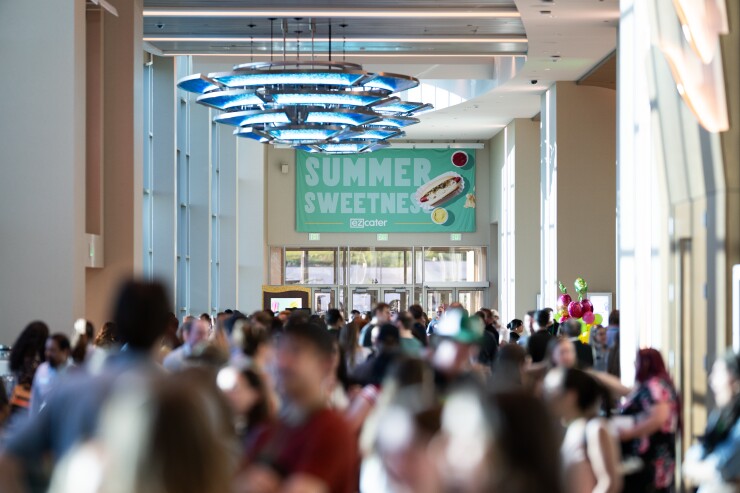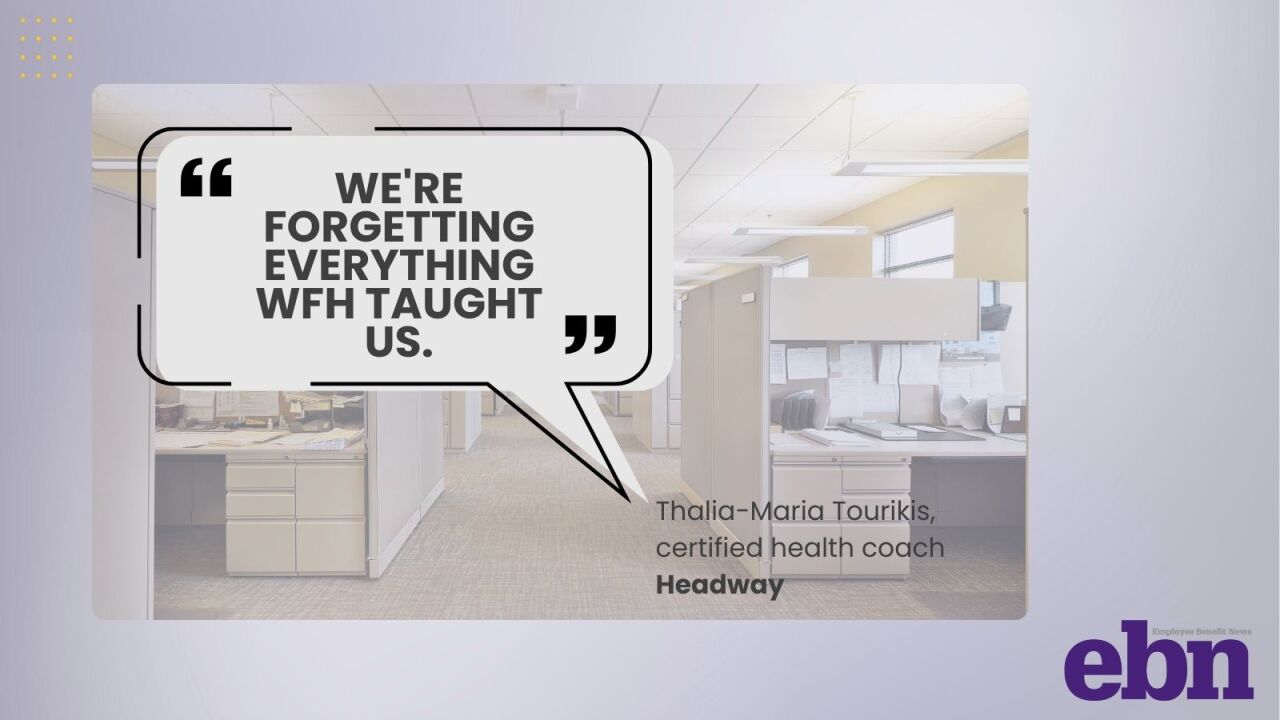- Key insight: Discover how structured, periodic in-person weeks strengthen engagement across a 40-state hybrid workforce.
- Expert quote: Regular in-person time "facilitates job satisfaction and retention," says Robert Kaskel, ezCater's head of people.
- Supporting data: Up to 35% attend monthly Together Weeks; Summer Sweetness draws nearly 60% (500+ employees).
Source: Bullets generated by AI with editorial review
For a workforce stretched across 40 states, it can be challenging to
The company, which works with restaurants nationwide to provide its employer clients with local access to anything from individual employee meals to catering for events, is rooted in the belief that
"Our co-founders intentionally created a culture that was very employee centric," says Robert Kaskel, ezCater's head of people. "Having time together facilitates outcomes that we care about, like job satisfaction, loyalty and retention."
Leadership also knows the value of letting employees recharge, which is why in addition to a flexible PTO policy, employees are offered an ezBreak every five years — a paid four-week sabbatical accompanied by a $5,000 bonus. So far, 35 employees have taken a sabbatical this year.
Read more:
Kaskel and Sara Lundgren, ezCater's director of communications and content, talk about why time with team members during Together Weeks and the company's annual Summer Sweetness gathering is so valuable, and Lundgren's first sabbatical experience.
What types of things go on during the monthly Together Weeks in Boston?
Kaskel: The voluntary program invites folks to the office to collaborate, invest in making friends, and engage in conversations that are best done face-to-face, with all expenses covered. We get pretty good attendance — up to 35% of employees coming in on those weeks. Lunch is provided three times during these weeks through our Relish program, which gives folks an added opportunity to get some delicious food from a restaurant of their choice, sit together, develop relationships, exchange ideas and generally bond over a shared meal.
My team did a 2025 planning session in January that was the primary input to the creation of our road map for the year. We're getting together as a team [again in the fall] to do our retrospective on the year and to begin our planning for 2026, and to have some fun — we're taking the train to Salem and doing a scavenger hunt.
Read more:
What is the focus of the annual Summer Sweetness week?
Kaskel: It's designed to foster a fun, social-oriented and collaborative environment for employees. In July this year, we got together at a conference center and casino in Minnesota, and we had a blast. Some work took place — we had a really robust company meeting, we had a panel with some customers, which was really interesting to listen in on — but it was just a lot of fun. Over 500 of our employees, nearly 60% of the company, attended. The company established it in 2021, and it's become a summer tradition that employees look forward to.

How are employees spending their sabbaticals, and why is this such an appreciated benefit?
Lundgren: I took my ezBreak last summer. My husband and I took our daughter to Sweden, which is where my husband grew up, for two weeks. It's not a common amount of time that you can take and truly unplug with family, and then it still allowed me two more weeks when I got home to relax after that. That was amazing. And I did little day trips here and there, too.
I got to do a lot, but most importantly, I was able to come back feeling really recharged and super appreciative to work here. [I was] excited to come back and dive back in, and now I'm already looking forward to my next one.
Kaskel: I've heard stories [about employees taking] four weeks for a family vacation. One person used the time to teach her son, who was about to go off to college, how to cook. Folks have used it for a staycation to do home renovations — it's time to use in whatever way is meaningful to you.
Read more:
How do people make sure their teams are equipped for them to be gone for this extended amount of time?
Lundgren: I took it upon myself to create lists and make sure everyone felt prepared before I was out. Everyone is very intentional about leaving you be on your ezBreak; they are excited for you, so you don't feel like you're leaving a burden.
Kaskel: I think we get a good amount of practice about how to deal with it, because we have flexible PTO and people leverage it. This forces us to get good at how to manage when people are out, and like Sara said, for folks who are going to be out for any period of time, maybe a week or more, to create a transition plan. I just took a two-week vacation, and I wrote a transition plan for my team including work that I wanted them to continue to advance and meetings I wanted them to facilitate, so they felt well prepared about how to cover for me while I was out.
The other thing is that overall as a company, we do a pretty good job of not having a single point of success or failure, so that somebody being out doesn't cause a problem for the business or a delay of a strategically important priority.






